Pyrausta aurata
(Scopoli, 1763)
-
 Subfamily: Pyraustinae
Subfamily: Pyraustinae -
 Wingspan: 16-20 mm
Wingspan: 16-20 mm -
 Flight period: May - Sep
Flight period: May - Sep -
 Spread:Common
Spread:Common -
 Host plants: Lamiaceae
Host plants: Lamiaceae
Information
The Pyrausta aurata also called Mint moth is a moth of the Crambidae family, subfamily Pyraustinae, with a wingspan of 16-20 mm.
In Europe it can be found practically everywhere.
In Italy it is also present in the islands. *
It is also present in Africa and Asia.
The front wings have a bright purple color with golden yellow spots, especially when they are just flickered, or brown with yellowish spots when worn.
The number and intensity of these marks is quite variable, but the shape and arrangement of the spots in the post discal region allow for identification of the species.
The hind wings are brown in color with a golden yellow band in the post-discal region and a narrower one, at times just hinted, in the submarginal area.
This species is often confused with Pyrausta purpuralis .
he main feature is the arrangement of the postmedian markings on the front wing.
On Pyrausta aurata the only constant post-median sign is a round golden spot near the costa, but there is usually another small gold mark between it and the costa.
In freshly flickered specimens, there is sometimes an indistinct golden post-median wavy line between the round spot and the back.
On Pyrausta purpuralis the postmedian markings may form a large continuous band, but are usually divided into three substantial spots.
The spot near the back is always much more consistent than that present on Pyrausta aurata, and turns towards the base of the wing which approaches the dorsal edge
It is a bivoltine species sometimes trivoltine, active mainly during the day but it is possible to observe it also at night when attracted by the artificial lights;
in the case of three generations two of these are superimposed. Adults can be observed in flight from May to September depending on the latitude.
The caterpillar that can reach a length of 13 mm has a variable color and can be light green, dark green, light brown, gray black or reddish,
with a darker back line. The head is brownish black. The pupa is rather slender, from red-brown to black-brown. **
The habitats are Limestone pastures, Forest clearings, Gardens and Quarries.
The larvae feed on Lamiaceae such as Mentha spicata, Mentha rotundifolia (mint), Origanum vulgare (marjoram), Salvia pratensis, Melissa officinalis (lemon balm), Nepeta cataria (nepitella) and Calamintha spp,
on the underside of the leaves before feeding on the flowers within a net made of silky threads.
* Lepidoptera mundi https://lepidoptera.eu/ - Fauna Europea https://fauna-eu.org/
** Bestimmungshilfe für die in Europa nachgewiesenen Schmetterlingsarten - http://lepiforum.de/
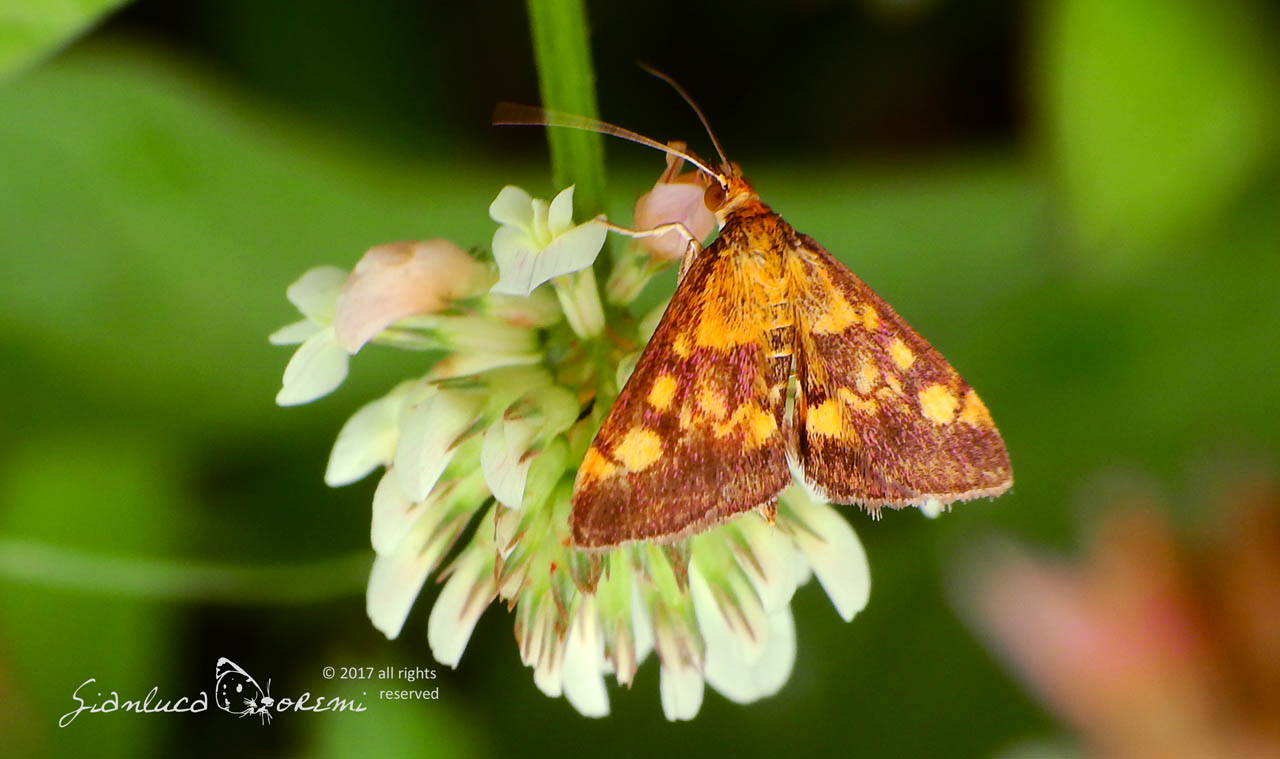
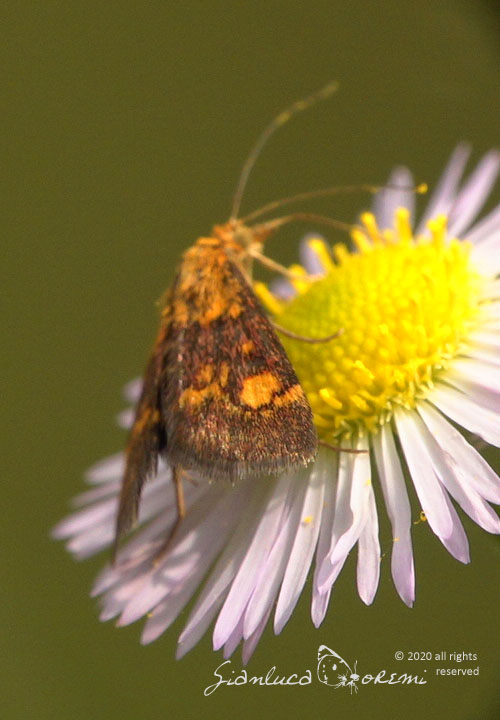
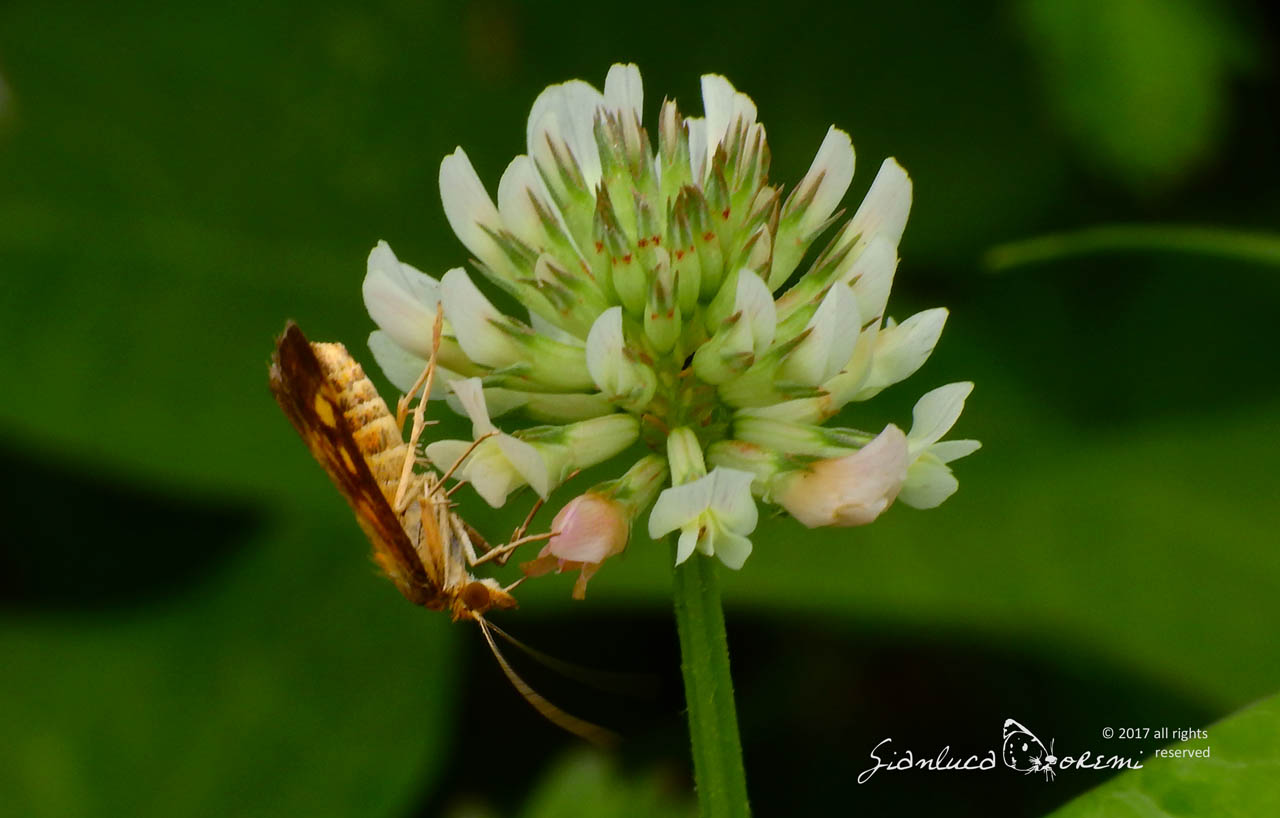
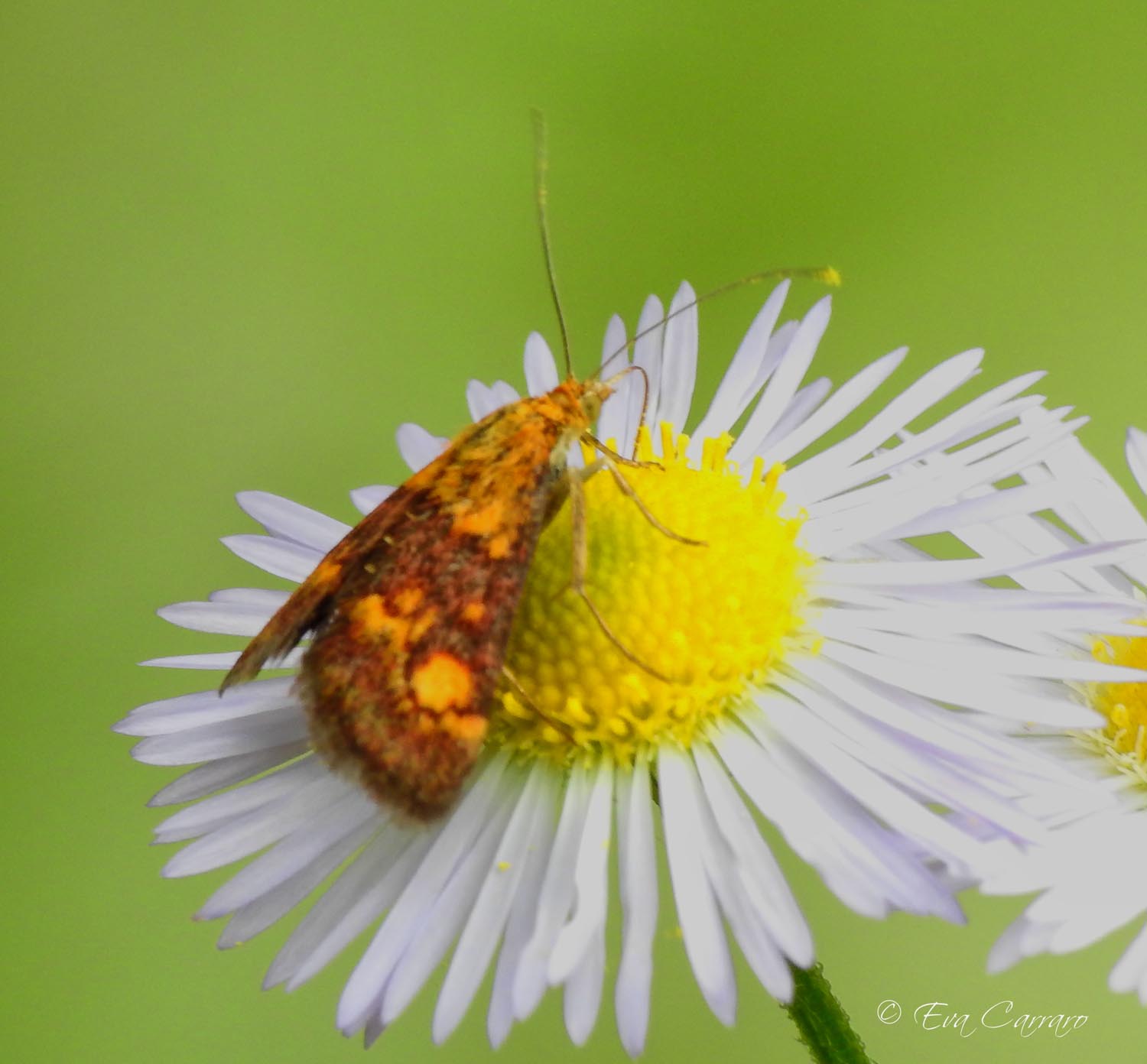
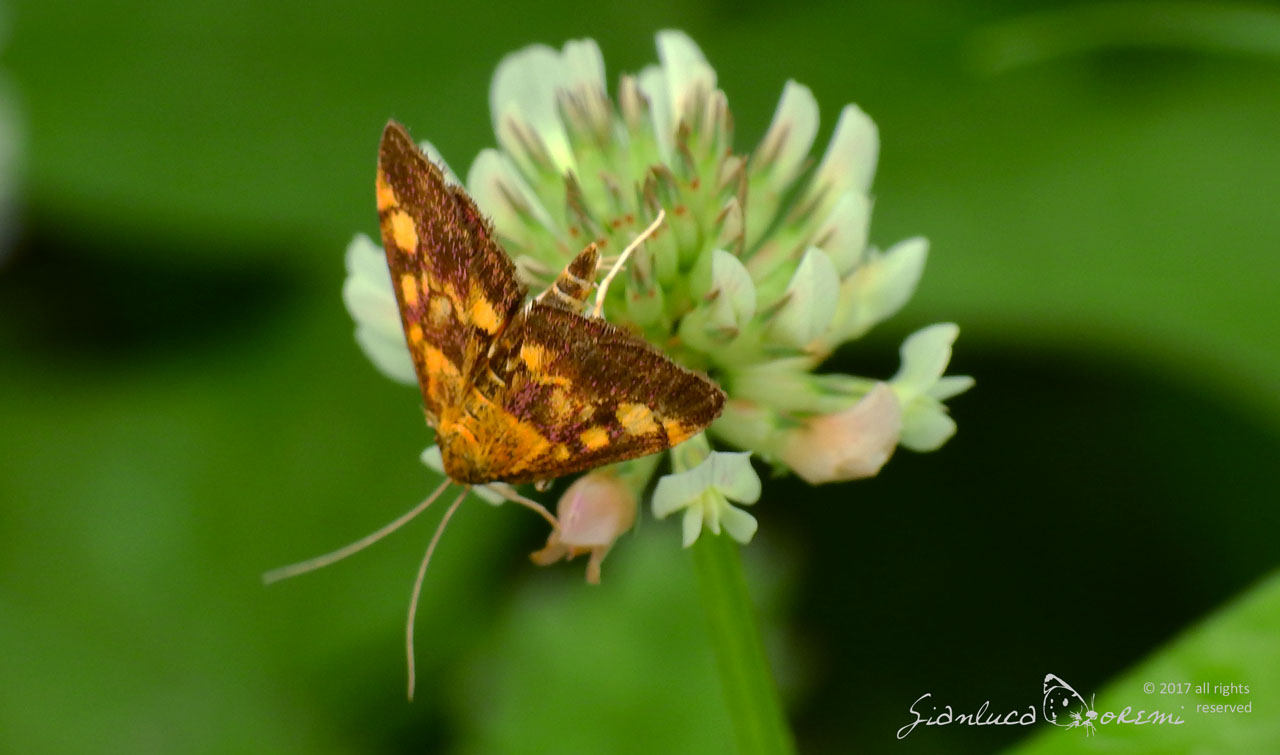
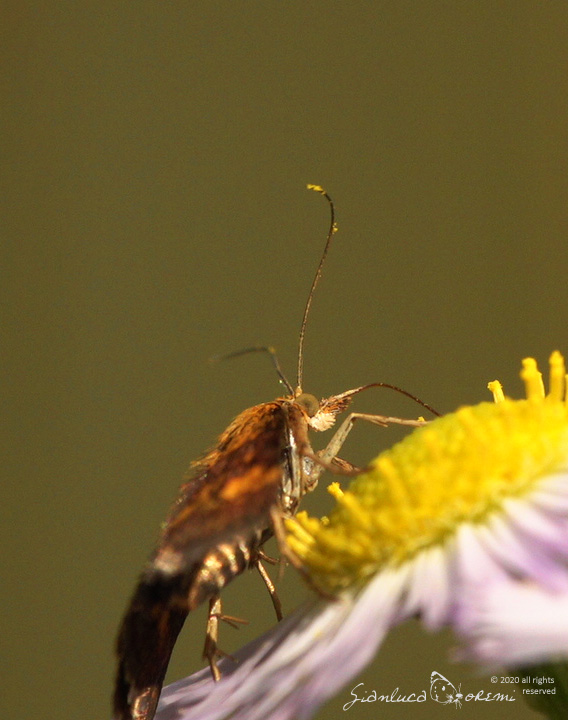

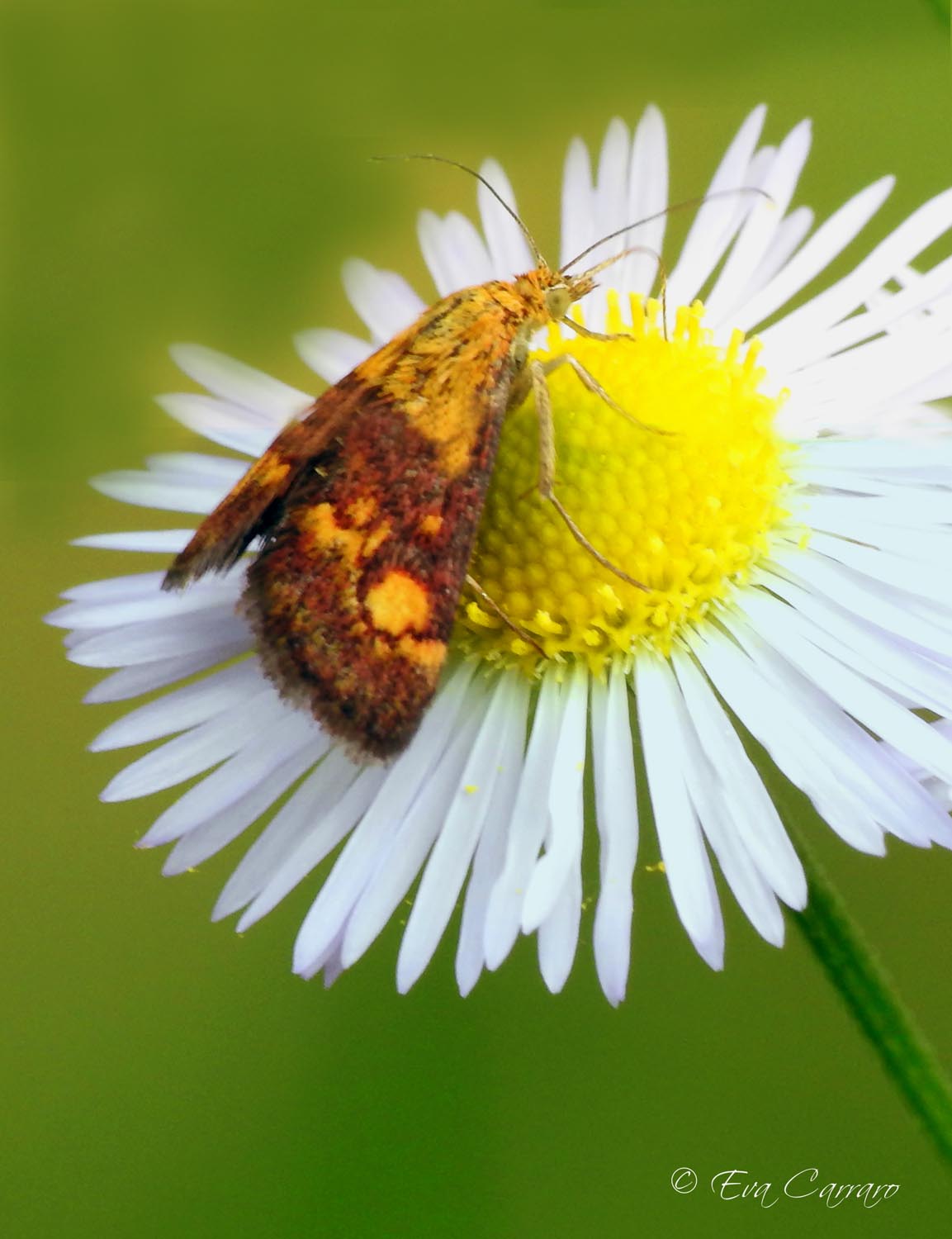


 EN
EN ITA
ITA
Social and publications